In Greco-Roman mythology, the Trojan War was touched off by a golden
apple.
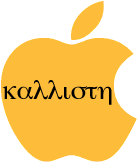 Offended that she was not
invited to a party thrown by one of the goddesses for all of the rest,
Eris,
the Goddess of Chaos, Strife, and the Random Factor made a golden
apple. On it was inscribed one word in Greek:
καλλiστη. Roughly translated
into English this means "for the prettiest one."
Offended that she was not
invited to a party thrown by one of the goddesses for all of the rest,
Eris,
the Goddess of Chaos, Strife, and the Random Factor made a golden
apple. On it was inscribed one word in Greek:
καλλiστη. Roughly translated
into English this means "for the prettiest one."
Of course, this disruptive little item was contended over by all the
goddesses, until one of them tapped a young handsome shepherd, Paris,
on the shoulder and asked him to decide which of the goddesses was most
deserving of the apple. Paris chose Aphrodite, who rewarded
him by producing Helen of Troy, the queen of Troy and wife of
Menelaus.
The little detail of Helen being another man's wife basically
started the whole messy business of the Trojan war.
Disruptive Technology
At its best, Apple technology is profoundly disruptive to the
established technological order. Apple has indeed been all about
"thinking different" - and it also never fails to give PC manufacturers
fits. Thus it's quite applicable that the best and most disruptive of
the Macs should be honored by a new designation: The Golden Apple.
In roughly chronological order, here are the first 25 recipients,
plus a non-Mac product which deserves one:
Yes, the 128K came first, but Apple had to use a "Fat Mac" prototype
to run the famous Mac launch demo
because the 128K
was too weak to do it. As a little bonus, I re-recorded the soliloquy
the Mac spoke at the launch demo using Alex, the new generation voice
of Macintalk introduced with Mac OS X 10.5 "Leopard". Listen and enjoy.
The SE was the first Mac that was strong enough to take on the PCs.
It meant business. It could read PC 3.5" 1.44 MB floppies (after an
update in August 1989). It was also the first to come standard with an
internal hard drive and internal fans to provide the cooling Compact
Macs needed but which were loathed by Steve Jobs. It was no accident
that the fans were added to the Mac after Jobs was pushed out of
Apple.
The pinnacle of the Compact Macs - at least until its reincarnation
as the iMac series. The SE/30 was the first Compact Mac to come
standard with the SuperDrive PC-compatible high-density floppy, and
many are still in action as web servers because of their power in a
small size. Don't expect to find one for a steal on
eBay . . . they remain very much in demand.
Incredibly expandable, this machine is sought after by Vintage Mac
enthusiasts to this day. I forgot how important this machine was
until Fearless Leader
Dan Knight reminded me. Although it came before the storied Mac
IIfx, arguably it could be beefed up to the point where it was as
powerful as one. Unlike the Mac SE/30, which was unable to use 32-bit
addressing without the help of a CDEV, the IIci was 100% 32-bit clean, which made its useful lifespan
greater than almost any other Mac of its era.
The "Bull Goose Mac", as the editors of the original Macintosh
Bible put it. A mighty monster with a mighty price tag, ($10,000!)
with lots and lots of muscle - sort of the "muscle car" of Macs. It has
its faults, that's why it's both a Golden Apple and a Second Class Mac. The black SCSI
terminator that is necessary to keep the SCSI chain working is almost
impossible to replace, the RAM it requires is rare, and the Mac OS
never got the tweaks it needed to take advantage of the additional
helper processors designed into the logic board. But it took the
pinnacle of the Quadras to beat this computer as it arrived out of the
box. A IIci might be able to beat it with lots and lots of tweaks and
upgrades - upgrades that are also increasingly rare now.
The PowerBook 170 was the top model from the first generation of
PowerBooks. The PowerBook 100 was
sort of neither flesh nor fish nor fowl, having been manufactured for
Apple by Sony. Many people loved it though and still do. However, I
love the Cupertino-originated PowerBooks. The trackball was made of
win, and the PB 170 was powerful enough to be used as more than just a
"basic portable" model.
The first Quadra (along with the huge Quadra 900). Also the first with the Mac
Chord instead of the Mac ding at startup. The 68040 was one hell of a
chip. Too bad there was never a Mac with an '060. (I seem to remember
the '060 made it into the Amiga.)
It was the Duo Series that were
the truly revolutionary PowerBooks. Slim, slick, powerful, with a
really nifty dock to turn your road warrior lappie into a very capable
desktop. Apple got it right with the Duo.
This makes the MacBook
Air particularly disappointing, because there is no way to turn
that machine into something more functional. There should have been an
AirDock sold with every MacBook Air, giving it more ports and an
optical drive. For the "elegance factor" perhaps such a dock would be
wireless, with some sort of high-security wireless link instead of a
cable or a docking port. Apple didn't do this with the MacBook Air, and
that's why I think it may end up a potential Road Apple down the
line.
The LC series was a good idea but didn't live up to its potential
until these lovely machines came out. I'm a bit prejudiced in that the
Performa 460 was my first color Mac. It even had enough muscle to run
Photoshop 5.5! It was also a precursor of things to come with Mac
design. The little wonder weighs only 8 pounds and is only 3" tall. It
was the most compact desktop Mac ever, up until the Mac mini. They loved these little
machines in the schools, and for good reason: The low profile made
these machines easy to bolt down to desks with a couple of strips of
metal.
In the bad old days, when Apple was the red headed stepchild of
computing and Microsoft/PC fanboyism intersected with real life
circumstances that kept the company on death watch, there were often
attempts to make Macs play nice with the DOS and Windows world. This
started with the MacCharlie device that fit certain
compact Macs and continued right until Apple's switch to Intel/x86
architecture allowed for dual-boot Macs and running PC operating
systems like Windows and Linux in virtualization.
The Quadra 630 allowed the option of a processor card that added
first a genuine Intel 486DX2/66, then later the cheaper Cyrix 486/70.
The computer had its faults: a 68LC040 instead of a full-fledged 68040,
but that could be remedied. And the DOS compatibility card took up
residence not only in the CPU socket, but the Processor Direct Slot as
well. Still, pretty amazing to have something that could run DOS
alongside the Mac OS. I'm guessing that when you consider the era, it
also ran Windows 3.11 and Windows 95.
Although Amiga used DSPs (digital signal processors) to beef up
processing power and offload certain graphic and sound intensive
functions, this was the first time it was tried in the Mac. Although
weak by today's standards, the AV Quadras were full of win in their
day. I also think the 660av was one sleek and sexy design. I have a
fatal weakness for the "flat" Macs. The Quadra 840av, unfortunately,
uses the Quadra 800 case, a
design so bad it merited being ranked as a Road Apple.
The pinnacle of Duo-dom. Color screen, PowerPC processor, and the
convertible pleasure of the Duo experience. I don't know why this
wasn't carried over into future PowerBooks. It would have been nice to
see G3 and G4 Duo lappies.
No, it's not technically a Mac, which is why I'm not assigning it a
number. However, it was incredibly
ahead of its time and displayed the first hint of the design
philosophy that would explode into the iMac, G3 and G4 minitower, and
iBook lines. In fact, this durable little machine, designed for K-12
students and only available through Apple Education channels, was
so tough it could survive drops and live to fight another day. It also
prophesies the eventual rise of the netbook, a trend Apple has yet to
jump into. I think if Apple revived a similar form factor and basically
adapted the iPhone/iPod touch build of Mac OS X to it, they might
have a netbook for the ages.
After moving from the knuckle-busting case of the 9500 and sporting
6 PCI slots (one must be populated with a video card), this was a
machine made for such rarefied applications as AVID and ProTools media
workstations. For example, I saw one of these as late as 2003 as the
heart of a professional recording studio, its 5 "free" slots crammed
with DSP cards and handling 30 tracks of digital audio. A truly mean
machine, one that should have the same legendary status as the
IIfx.
This was the computer that saved Apple. There were better, faster,
and more useful iMacs, but this was the first, the one that broke Apple
out of its doldrums, resurrected the Compact Mac heritage, and put the
phrase there's no
step three! into the geek vocabulary.
Just like the Bondi Blue iMac, this reinvented the Power Macintosh.
And indeed, there were better Power Mac minitowers that emerged
afterward, but the Yosemite was the first. It introduced FireWire,
albeit in a rather crippled and ineffective way. The version 1
Yosemites were borderline Road Apples, thanks to a broken IDE bus.
The puck mouse sucked, and
it used the iMac keyboard, which I love but a lot of people hate with a
passion. But they were revolutionary in their own way. And they still
look beautiful and new, even to this day.
The PowerBook would never be this good again, in my humble opinion.
Some cite the aluminum PowerBook G4 as being close to or even better
than the Black 'Books, but I still say that these elegant, beautiful
machines were nothing short of awesome with their incredibly beautiful
LCD screens. The Pismo finally lived up to the promise of the G3
PowerBook, added FireWire, and got rid of the last vestiges of "Old
World" Mac architecture.
This Special Edition iBook was of the generation that added FireWire
to the groundbreaking design of the "Clamshell" iBook, and this model
raised the ante by adding a more powerful chip. Theoretically, you
could use it to edit DV video. It might not be as muscular as the 500
MHz G3 Pismo, but in its day it was the economy choice.
However, there is nothing that causes a Mac technician to break into
cold sweats more than the prospect of upgrading a Clamshell. These
first iBooks were celebrated for their durability, but the durability
came with a price: the guts of the Clamshell are buried deep within
layers of metal shielding and high-impact plastic. Tearing it down is a
scary job; putting it back together right is even worse. Still, these
are sweet machines. And cute, too. A little on the heavyset side, but
cute.
Yes, everyone loved the
Cube, however, it was overpriced and underpowered. It was the iMac
G4 with its Luxo
lamp-like monitor arm that people bought and loved. Beautiful design,
beautiful functionality. However, it's best to leave Mac OS X
10.4.x on this machine, even if you can hack it to install Mac OS X
10.5, because you run into video problems with Leopard.
The penultimate translucent Power Macs, and also the very last Mac
that could boot into Mac OS 9.2.2 natively. They were followed by
the last translucent
Power Macs, which could not boot 9.2.2 but had the higher-speed
FireWire 800 ports. However, these machines could use Mac OS 9.2.2 as
the "Classic" compatibility layer, just like the rest of the newer
Power Macs. These machines all can officially run Leopard, which is
more than can be said for my dual-processor Gig-E G4.
The Mac mini was a bold play that should have been bolder: It should
have been priced into the bargain basement, not stopping at $499 for
the entry level version. By this time, PC makers like Dell and
eMachines were pushing cellar dwellers cheaper than this - and
including monitor, mouse, and keyboard with them.
The Mac mini G4 is pretty good in spite of the timidity with which
Apple pushed it. It's downright dinky . . . this marvelous
"bitty box" is the
dimensions of five stacked CD jewel boxes. The G4 version had dedicated
VRAM and a ATI Radeon 9200 video chip separate from the logic board
chipset. After Apple adapted the design to the Intel Core architecture,
it began to use built-in video from the Core chipset and take system
RAM for video.
Mac mini stomps all over VIA's EPIA platform, because
it's just plain better. Better chips, better components. Unfortunately
that edge is not obvious to the average low-end computer buyer. If
Apple wants to save the mini (and I'm not sure they do) they are going
to have to price it way, way down to compete with netbooks and EPIA. Of
course, that might mean going to the same crappy parts that you see in
the ultra low end of PCs.
Apple made its first step into the wider world of the Intel x86
architecture with this iMac. Yonah was a big step forward, although it
would take Core 2 Duo (Merom and after) with its 64-bit architecture
and higher efficiency to really meet the full potential of the chips.
After the disappointing G5 microprocessors, Intel Inside was a breath
of fresh air.
Like the eMate, the iPhone isn't a Mac; it's a completely different
animal. However, it does run a build of OS X, and it augurs well for
the future of Apple's low end - perhaps even an eventual Apple netbook.
A convergence device about the size of an eMate with a beefed up
version of the iPhone's OS running under the hood with built-in 3G
wireless next to WiFi and Bluetooth would be nothing short of
awesome.
The iPod touch, which does not
have the 3G wireless and the lock-in to AT&T's wireless service, is
a great alternative for those who prefer other wireless carriers and/or
don't want the single point of failure that a multifunction handheld
device represents.
And now we come to the newest Golden Apple, the white MacBook with
Nvidia graphics. In many respects this is actually a better machine
than the higher-end unibody aluminum MacBooks.
- It uses the Digital Rights Manglement-free mini-DVI port rather
than the DRM-laden
DisplayPort.
- It has a FireWire port, and the aluminum MacBooks don't.
- Although it actually got a raw processor speed downgrade rather
than a speed bump, as you would expect in an enhanced model, the new
processor may make up for the speed downgrade in efficiency, and it got
a faster frontside bus, making the downgrade a wash.
The DRM problems hurt everyone, as was shown with new restrictions
on viewing iTunes video content on "unsupported" monitors and
projectors. As Free Software theorist Richard Stallman correctly points
out, computers with these kinds of "protections" are defective by
design and in essence transfer control of your computer from you, the
user and owner, to the Big Media consortiums known as the Recording
Industry Association of America (RIAA) and the Motion Picture
Association of America (MPAA). The industry-hated "analog hole" that
theoretically allowed copyrighted material to be captured in an
unprotected form is "patched" - at least in the industry's
viewpoint - by the chips that control DisplayPort. This may be the very
last Mac made that does not have DisplayPort, and that alone makes it
worthy even at this early stage of the game of the Golden Apple
designation.
One suggestion for use of USB 2.0 devices with this machine: Invest
in a powered hub, because this Mac can only provide the full 500mA of
power to one high-powered USB device at a time. Put another USB device
on a bus-powered hub, or even on the second USB port, and you will only
be able to get 100mA out of it. Use a powered hub, one with a plug-in
"wall wart" power supply, and you will likely have the workaround you
need. 

 Offended that she was not
invited to a party thrown by one of the goddesses for all of the rest,
Offended that she was not
invited to a party thrown by one of the goddesses for all of the rest,
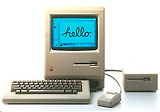 1.
1. 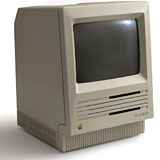 2.
2. 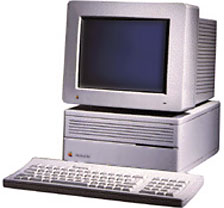 4.
4. 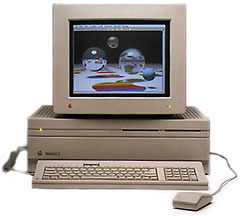 5.
5. 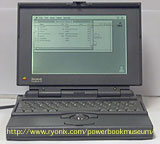 6.
6.
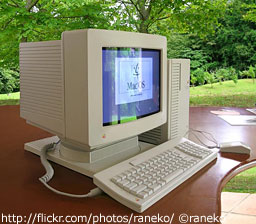
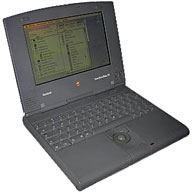 8.
8.
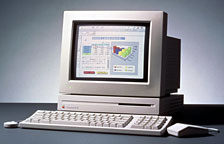 9.
9. 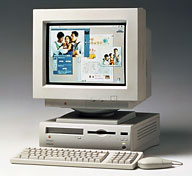 11.
11. 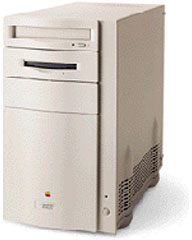 12.
12. 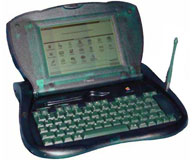
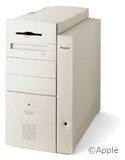 15.
15. 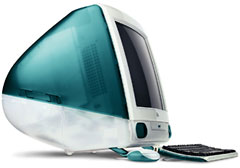 16.
16. 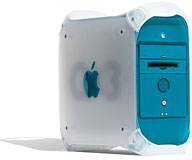 17.
17. 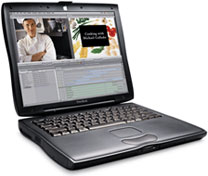 18.
18. 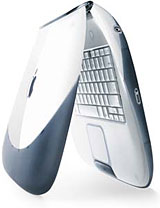 19.
19. 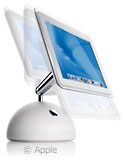 20.
20.
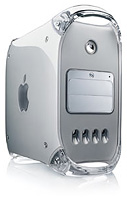 21.
21. 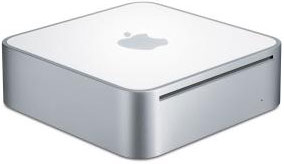 22.
22. 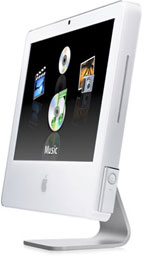 23.
23. 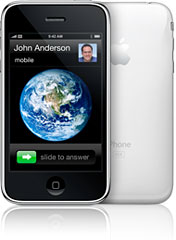 24.
24.
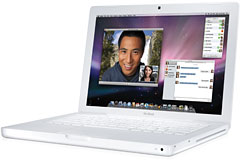 25.
25. 
